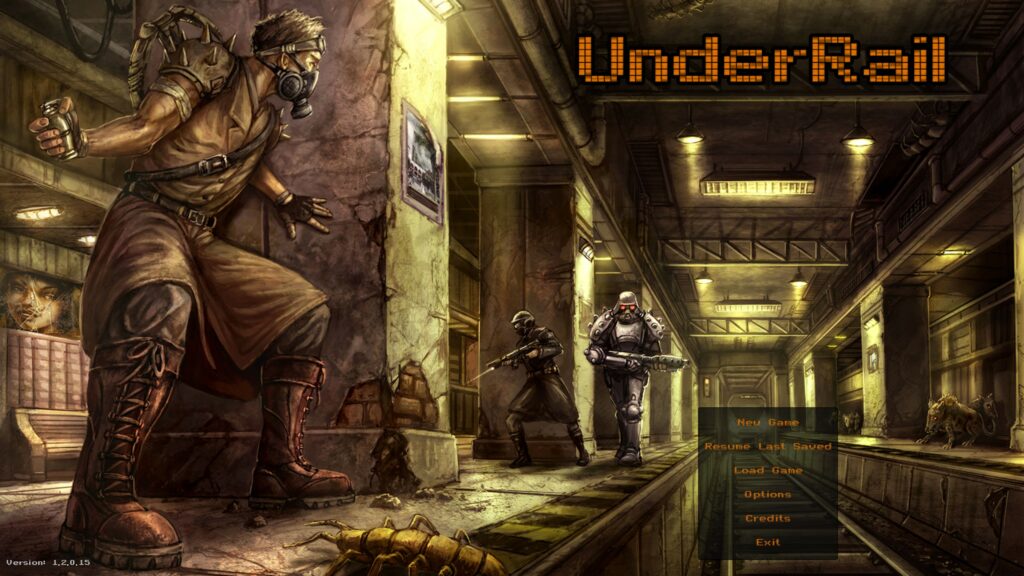
Way back in 1998, I tried Fallout for the first time. A friend who had a way better PC than I did at the time had bought it, played the whole thing, loved it… and lent it to me to try. I’d love to say it was a life-changing experience, that I discovered the wonder of a reactive world, with many ways to complete quests, consequences for my actions, and a fully-realised setting, for all that the graphics weren’t exactly representative of such.
Alas, that wasn’t the case. My PC at the time was garbage, a 486-based, 66MHz machine that had maybe 1MB (note: MB, not GB, lol) of RAM and no discrete graphics card. So no Fallout for me *teardrop*
Many years later I finally got around to playing it, followed by Fallout 2, and I will say this: aspects of those games have aged really well. Other aspects, such as the combat and overall control scheme, really haven’t. The aspects that counted, though? The world, story, characters? Yeah, they’re still leagues beyond 95% of games released in the last 2+ decades.
Fast forward to 2015 and along comes a little indie title called UnderRail, one of the 5% that manages to put together a package of good writing and an interesting setting to explore, while also maintaining an enjoyable combat system. Though there is a serious caveat to that last statement, which we’ll get to later.
So what is UnderRail? It’s an isometric game with a similar aesthetic and world to the Fallout universe, but rather than being set on the surface of the planet, it takes place almost entirely within a fictional Metro system, hence the title.
It’s made by a Serbian developer, Stygian Games, and takes place somewhere in that general region of the world; it’s not specifically stated what country it is (nation states were superseded by supercorporations in this world anyway), but it’s also the far future (at least the 2600s), so really it could be anywhere at that point.
It would probably be more accurate to say that this game is closer in overall tone and style to games such as Metro or S.T.A.L.K.E.R. You know the kind of thing; depressing Slavic view of reality; a lack of hope and optimism (though it’s not nihilistic!), and a general sense of existential dread (and cosmic / Lovecraftian horror elements); dry Eastern-European humour rather than the black humour of Fallout.
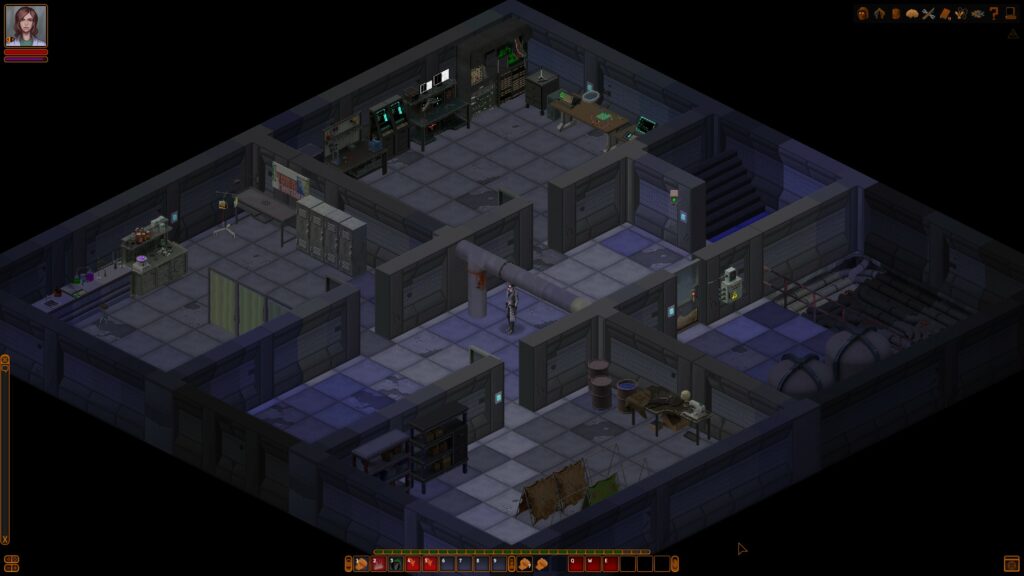
The general idea is that some sort of cataclysmic event has rendered the surface of the planet uninhabitable (nukes, satellite weapons, mutagens, other nastiness; a lot of it is intentionally kept vague), and those living in the Station-States of the UnderRail are the last vestiges of a rapidly fading human race. So you know, typically depressing Eastern-European fare 😊
With the whole game taking place in the Metro system, you might imagine that the environments probably get a little samey. And eh… you’d be partially correct, you will spend a great deal of time wandering around rail tunnels and caves of one form or another, but there’s enough variety that it doesn’t get tedious, and different settlements do have their own aesthetics.
There are also plenty of caverns, military bases, civilian areas, and more built out in the main stations, and even a whole new area to explore in the Expedition expansion DLC (Update: The Heavy Duty DLC came out recently and also introduces a neat new area to explore). All in all, the game does a good job of keeping things varied enough, especially if you happen to enjoy certain types of setting such as ancient biolabs, mutagenic mischief, Old World military bases and outposts, and similar things. Which I do. Very much so. I’d prefer less of that in the real world, however.
Probably the best aspect of UnderRail’s overall world, though? I’d say that’s the atmosphere. It really nails that post-apocalyptic feel, while simultaneously having a fully functional civilisation to interact with, including numerous factions each with their own ideologies (and theologies in some cases). There’s a lot of interesting stuff going on in this setting, some of which is left up to your interpretation.
While UnderRail is technically post-apocalyptic in that everyone lives underground due to a cataclysm on the surface, the world of the metro system itself isn’t ravaged like Fallout’s setting. There are businesses and corporations, oligarchs who run the major city in the game, advanced technologies and research being undertaken to improve what they already have, and more. It’s a fully functional world that just happens to take place underground due to the surface world being a frozen hellscape. In that respect, it’s actually quite different to Fallout, where the world is still in the process of rebuilding.
It’s amusing to me how an isometric game using pre-rendered art assets like UnderRail can create such an atmosphere with a degree of skill and competence that a AAA release like Fallout 4 can barely muster, and this is coming from someone who actually quite likes Fallout 4’s atmosphere (shame about the rest of the game…). Creating an atmosphere is more than simply putting together different meshes and textures to build a ruined city, or a cabin, or a campground.
Atmosphere comes from a whole slew of things, and the feeling of dread, of loss, of a melancholy sadness at a world long dead… that’s a pretty tricky thing to do right, and UnderRail manages it with more than adequate aplomb. There again, Eastern European people tend to have a knack for this type of setting… for some reason.
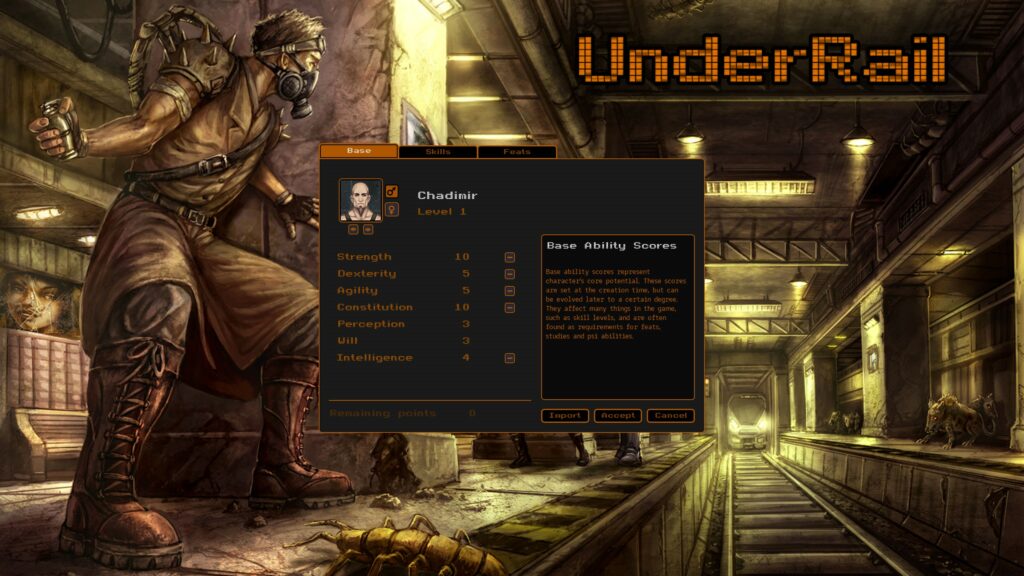
Okay, so assuming you’re into the post-apoc, ‘misery is fun’, Eastern-European setting, you’re probably already interested in UnderRail. So now you want to know how it plays, right? Well, the isometric viewpoint should give you a pretty big hint. It’s essentially a modern day CRPG, with a whole bunch of improvements and refinements.
First you have your basic stats of Strength, Dexterity, Agility, Constitution, Perception, Will, and Intelligence. All of these should be self-explanatory (with the exception of will), but I’ll give quick overview anyway:
Strength:
Affects carry weight and physical attack damage. Also important for heavy weapon users, and that includes ranged weapons; a sniper rifle or other hefty weapon (the Heavy Duty DLC adds Heavy Weapons as a new weapon type, as well) requires a decent level of strength to use effectively.
Dexterity:
Affects hand-eye coordination (things like lockpicking, thievery, etc.), as well as initiative (how early you act in combat). Also influences critical strike chance in melee, how effective your throwing is (important for tossing grenades!), etc. Also really important for light weapons like knives and pistols, as high Dex reduces AP cost for attacks.
Agility:
Unlike dexterity, which is more about using your hands, agility is moving your whole body. Affects reflexes in general, fleet-footedness, and other athletic / acrobatic activities. This is important for dodge, evasion, etc, as well as stealth. High agility can also allow you to reach locations and shortcuts by jumping across gaps, squeezing through small crawlspaces, and similar.
Constitution:
This is your ability to soak up damage. Helps lessen the effects of poison, and this stat is important for basically all builds (which is ironic, considering a lot of builds use this as a dump stat; avoiding damage entirely is more important for those builds). Low Con glass cannon builds are perfectly workable, but equally a high Con tank is also doable. You have lots of options in this game.
Perception:
Your ability to perceive the world around you, for example by spotting traps or hidden passages, as well as affecting your to-hit chance at range. The most important stat for gun / crossbow characters, as Perception directly affects your damage output.
Will:
I said this one might be less self-explanatory, and that’s because UnderRail isn’t just about regular combat with weapons, it also has psi-abilities. Will therefore governs that particular discipline (affecting overall power as a psi-caster, plus things like psi point regeneration), but also affects various mental things such as how you deal with pain and psionic attacks inflicted on you by others.
Intelligence:
The most important stat for characters who are more science / crafting focused, but also has some influence on psi-abilities as well (higher Int = faster sci point regen), so it’s a good idea to twin this with Will if you’re going for that type of character. There are ways to boosts stats temporarily via food or drugs, so you can always boost Int while crafting like that, but otherwise keep this stat at a middling level.
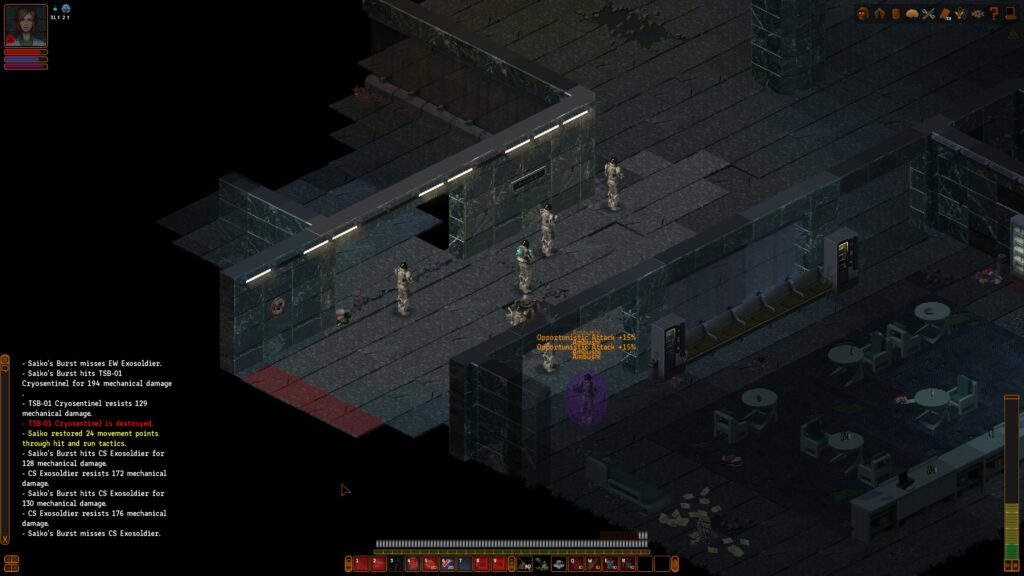
Additionally you have Feats, which are this game’s equivalent to Perks, and are used to refine and boost your character’s build, giving you special attacks like double damage when attacking a target with a sniper / crossbow while in stealth, adding critical damage chance to your grenades, improving your crafts, and similar things.
You’re probably already thinking that this sounds pretty involved, and you would be correct. So let’s talk about the caveat I mentioned earlier, as it directly pertains to character builds and how you play the game. UnderRail is one of those games that has a complex combat system with all sorts of synergies across different skills, feats, and equipment. If you understand the system, you can build truly ridonculous characters who are absolute power houses of death and destruction, even on the hardest difficulty.
But if you don’t understand the systems? For example, because you’re a new player and didn’t spend a few minutes browsing the Steam forums where you’d see various threads on why your character build is super, super important? You’re probably going to have a bad time. This is less an issue on easy and to a degree on normal, but hard and DOMINATING difficulties will kick your ass if you don’t understand the game’s systems.
This is because the opening ten or so hours of the game (reducing to ~5 hours or less for experienced players), which you spend largely in and around the starting region of South Gate Station and its environs, allows pretty much any build to succeed. There aren’t many seriously dangerous foes, and you can get pretty far even with a suboptimal build. Then you reach Depot A.
Depot A is the make or break point of your build, it’s where your character will be tested on how well you understand the mechanics of the game, and not just in the here and now ‘fighting enemies’ sense, but also in how well you understood the systems when you first built that character. And since this is your first time through the game, if you didn’t follow a build guide… well, you might just find yourself locked out of the rest of the game because your character simply can’t survive Depot A.
There are quite a few posts on the Steam forums from people angry at wasting ten hours of their life on a character, only to then find they built them in such a way that they simply can’t get though the major difficulty spike of Depot A. This is why anyone who’s played the game recommends that you follow a guide before starting for the first time.
It can get even worse, though, if you built a character that manages to survive most of the game (only really possible on normal or easy; a suboptimal build on hard or DOMINATING likely ain’t getting past Depot A, never mind the rest of the game), as you could conceivably reach the final dungeon… and get soft-locked, which did in fact happen to someone recently on the Steam forum. Your build is important.
There’s a lot of fun to be had for a certain type of person, building different characters with various synergies and then speed-running the opening segment of the game so they can get to Depot A and truly test their build. But for most regular players it’s nothing more than a frustration that might make them drop the game entirely.
That said, I would highly recommend you watch a build guide on Youtube and go with something that seems fun based on what you want to play around with. Crafting, firearms, melee, sneaky builds, there are plenty of fun aspects to tinker with, and creating god-builds is huge fun when you know what you’re doing. But for your first time through you probably just want something that’s fun and won’t constantly get you horribly killed or, worse, locked out of completing the game. You can also post your build on the Steam forums, where people will be happy to critique it for you and supply feedback.
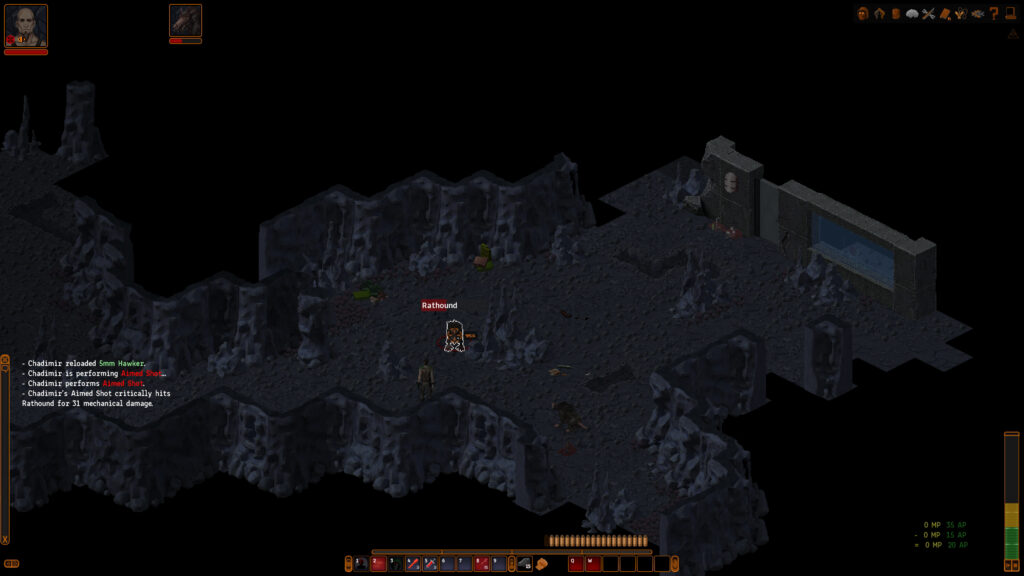
On the Expedition DLC expansion: it adds a lot of new stuff that’s fun to play around with, plus a huge new area to explore that’s intended for mid- to late-game characters. Some of Expedition’s additions are available from early-game (including new weapons and crafts, etc.), so it’s great for a new playthrough, but you can also buy it and jump straight in with your late-game character, no worries.
As for the new DLC, Heavy Duty, it adds some fun new weapons and a whole new skill (Heavy Guns), with light machineguns and miniguns, plus grenade launchers. It also has a new area called the Compound that’s basically a late-game challenge area to test your builds against high-tier enemies. I’ll probably review the two DLCs separately at some point, but just know for now that I consider them both to be well worth grabbing.
However, it might be best to only buy the base game first until you’re sure it’s for you… but buying the bundle that includes the DLC gives you a 20% discount, so really it’s probably worth just diving in and buying all three.
Once you’re actually in the game with your properly-built character, there are a few things to be aware of, and these are basic tips that apply to any game like this, not just UnderRail. First, be careful. Sounds obvious, I know, but plenty of people pick up a game like this or Dark Souls and then proceed to get demolished because they didn’t stop to think.
For example, why risk your own safety by opening the door in a chain-link fence when you could instead fire your weapon through it? Meanwhile, a trap-focused stealth build could sneak around an area placing mines or beartraps in strategic locations (chokepoints, in front of doors, etc.) before they even start combat. Then you lure enemies into those traps for massive damage, or to hold them in place for a couple of turns, meaning they can’t smash your face in with melee attacks. Positioning and tactics are both important to having a good time with this game’s combat.
Alternatively, you could go with a tank build where you can simply soak up damage due to insane armour values and high HP, while also using heavy melee weapons like the sledgehammer to keep the enemy in a stunned state where they can’t attack. There are a great many ways to build your character, and just as many ways to utilise the character in combat. Oh, and grenades are useful to ALL builds, don’t neglect them.
You’re probably starting to see why UnderRail fans tell new players to look up a build guide now, huh? It’s not like Fallout, which was actually a very simplistic combat system in a lot of ways, with a good amount of leeway that allowed weaker builds to still get by (especially non-combat speech builds, for example). UnderRail, by comparison, is all about the combat (though there’s plenty of story, quests, and lore, too!), and has a lot of systems that work together in various ways that you really do need to understand to fully enjoy the game.
Another way in which UnderRail is not like Fallout is that you don’t have a crew. Sure, in Fallouts 1 and 2 you can go solo, but generally it’s expected that you’ll pick up at least one companion (who’ll then proceed to fill your back full of 10mm bullet holes, Ian, you asshole). Not so in UnderRail, where it’s just you versus the world. Again, your build is important, and the solo nature of the game is a large part of why.
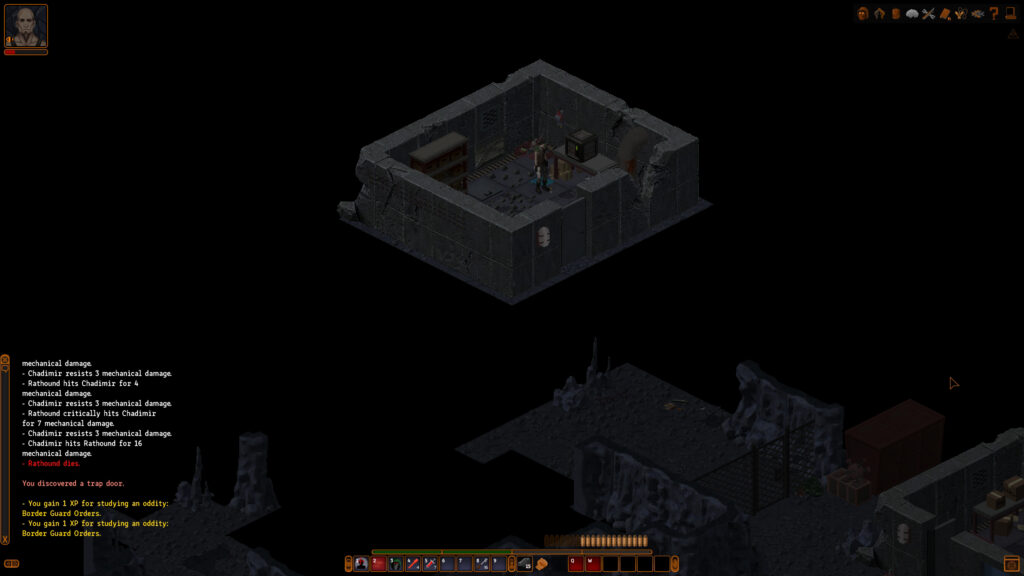
Assuming you’ve done a good job of building your character (or used a guide), and you get past the difficulty spike of Depot A, you’ll be ready to start your journey to Core City, which is where the game opens up for real, and you have several big factions to interact with, potentially join, or work against.
Or you can stick around South Gate Station for a while longer, given there’s actually a ton to do there, with new areas opening up after completing Depot A. One thing you should probably do is hunt down any remaining oddities before moving onto new pastures. That said, let’s talk about how experience gain works in this game, because it’s a little different to what you might expect. When you start a new character, you have two choices of exp gain:
Classic XP:
Like most RPGs since the dawn of time, this is your bog standard ‘kill enemy, gain numerical value of experience points, rinse and repeat until you level up’. This might be a better option for a new player, since it allows for grinding in the event you’re having a tough time. It’s also probably a smoother experience for a new player in that you can just play, kill enemies, complete quests, and get on with the game with relatively little exploration off the beaten path.
Oddity XP:
In this experience mode, which is considered the ‘proper’ way to play the game, you gain experience by finding oddities, which are lore-relevant items scattered through the world, or found as loot from defeated enemies, or awarded by completing quests. Each oddity generally gives you between 1 and 4 points, which go towards filling up your oddity XP meter (shown above the item hot bar, but below the ammo count, in the screencaps above), with each of the green blocks representing one XP point, and an increasing number of points needed to gain each new level.
Oddity kind of forces a particular playstyle of heavy exploration because you need to be looting containers (included locked ones, utilising lockpicking and hacking), killing enemies to gain their unique oddity items, hunting down unique enemies, and potentially even pickpocketing or killing named NPCs (which can turn an entire town hostile if you’re seen). If you’re not specced into lockpicking or hacking, this mode can be a bit of a pain and classic xp might be a better bet.
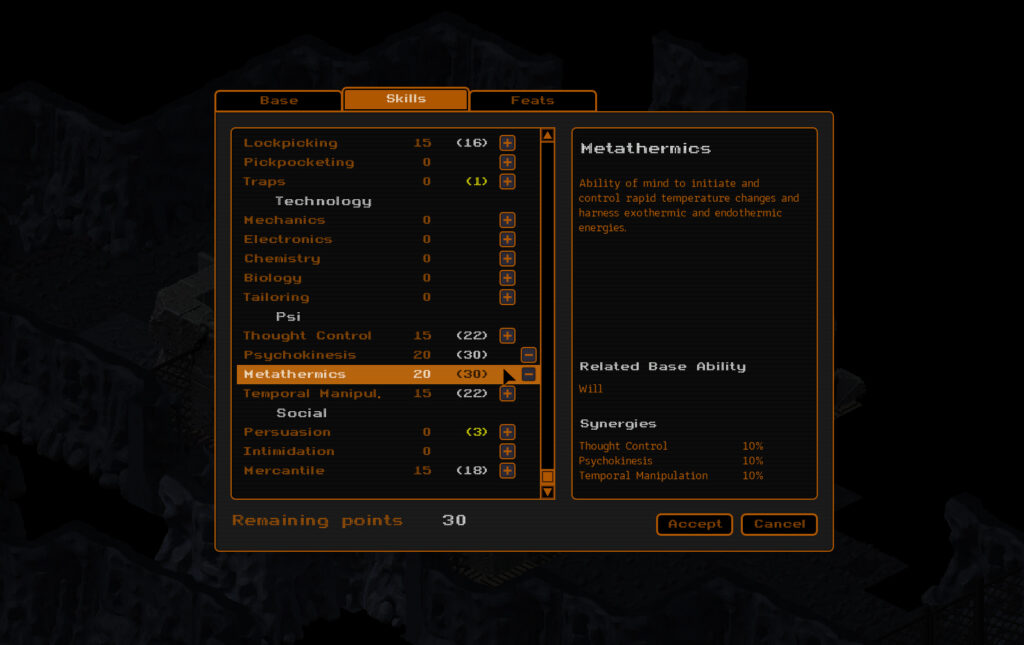
On the subject of combat and experience, another tip: there are creatures called rathounds in and around South Gate Station where you start the game. You might think that, being early game enemies, they’re pushovers that are just there for easy experience. You would be wrong. They are there to teach you important lessons about how the combat works. For example, rushing headlong into a new area and seeing a single rathound might prompt you to attack it. Unfortunately for you, rathounds hunt in packs and there are likely three more of them just around the corner, which will savage you and then eat your intestines for lunch. Protip: they don’t like fire, so carry a few flares or molotovs.
But more importantly, the purpose of this enemy is mostly to teach you that you can’t just rush in and attack anything you come across. This is a great way to get yourself killed, as there are often extra enemies lurking in the shadows. More than that, you also need to handle crowd control so that you’re not being hammered by multiple enemies at once (I mentioned grenades before; crowd control is one of their primary uses).
You also don’t get map markers, so you’re going to be learning the areas and figuring things out for yourself while dealing with those enemies; this game does not hold your hand, which is refreshingly hardcore (maybe a bit too hardcore in some cases, admittedly).
There is a map in-game that allows you to add notes reminding yourself of loot you couldn’t carry at the time, or mines you want to return to disarm (giving you the mine if your traps skill is high enough!), or particular enemy spawns, so you won’t be relying entirely on your memory.
I should probably touch on psionic powers quickly before finishing up this review, since they’re a big component of the game and can really change up how you play. First, to activate your latent psi powers, talk to the doctor (Pascale) in South Gate Station. He’ll give you a honking great pill to swallow (yes, the pill is red), and when you wake up you’ll be a newly-minted psi-user.
However, there’s one big caveat to using psi powers, and this reason is why it’s a manual choice you have to accept, rather than an automatic thing: it drops your max HP by 20%. That hurts, especially on harder difficulties where you already have less total health, so if you’re not intending to spec fully into psi powers, or take a hybrid approach, don’t take the pill.
Second, sci powers are ludicrous, and can almost trivialise certain enemies/encounters that are a huge problem for other builds (while making certain other enemies potentially much tougher early on, such as robots). As such, they’re fun powers to play around with if you fancy a change and want to see how differently the game plays with them.
There are three schools of magic in the base game: Thought Control (does exactly what it says on the tin), Metathermic (hot and cold), and Psychokinesis (electro abilities that are good against robots, plus telekinetic abilities). The Expedition DLC also introduces Temporal Manipulation, which is an excellent school for basically every character build as it gives you a number of super useful utility spells.
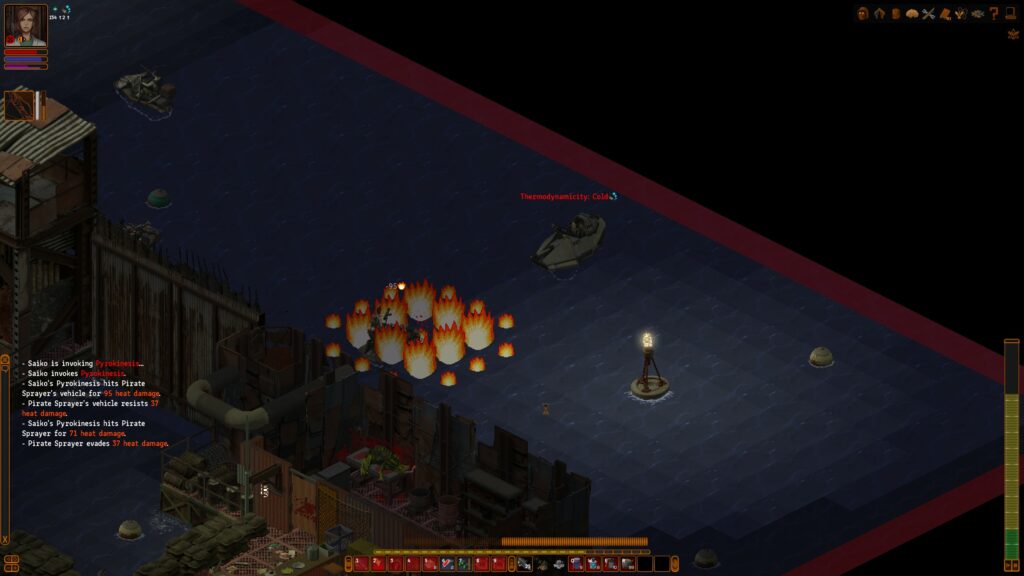
There are plenty of other aspects of the game to discuss, such as the murder mystery quest you can engage with in one of the towns, or the secret of the ooze… uh, wait, that’s a different franchise entirely, I meant the mystery of the mutagen, or learning about deadly psionic cats, or digging into the ideologies of the factions which inhabit UnderRail, but I think you get the idea. Not to mention the more Lovecraftian elements of the lore, which I won’t spoil here.
All in all, UnderRail is a super enjoyable entry in a genre of games that had, until fairly recently, been almost extinct, and quickly went in as one of my top 20 favourite games of all time. Thankfully the CRPG genre has gone through a revival in recent years and seems to be doing pretty well, so with any luck we’ll continue getting more games like UnderRail (the develop is already working on a sequel, titled UnderRail: Infusion, though it’s a long way off yet). So yeah, if it wasn’t obvious, I highly recommend this game.
To end things off, I’ll link you to a couple of useful resources. First, here’s a link to a newbie guide on Steam that will help you greatly when starting out. The first sections are the most important, and you can refer to specific sections as and when they apply to you (crossbow section if you decide to use that weapon for your build, for example).
Second, here’s a link to the UnderRail character builder, which is an awesome tool that lets you construct a specific build with all feats, specialisations (these are added by Expedition), and skills across all character levels before you even enter the game. This is less for your first builds, and more for when you’ve got some experience with the game and want to start tinkering with different play-styles, so you can put together a build in advance and refer to it when playing. It also lets you easily share your build with others, simply copy the URL.
All right, I think that pretty well covers UnderRail, at least on a surface level. It’s a complex and intriguing game, with lots of interesting lore and characters, and an enjoyable combat system. Well worth the money by itself, and Expedition / Heavy Duty are worth it just for all the extra items and game mechanics, even without visiting the new areas they add.
Oh, and if you’re hankering after even more of that Fallout-style goodness, maybe also keep an eye on New Blood’s (very early development) Fallout homage, which already looks great.
Have fun!
If you enjoy my work, consider buying me a coffee, or jump onto my newsletter to receive updates, free chapters, stories, and other goodies.


